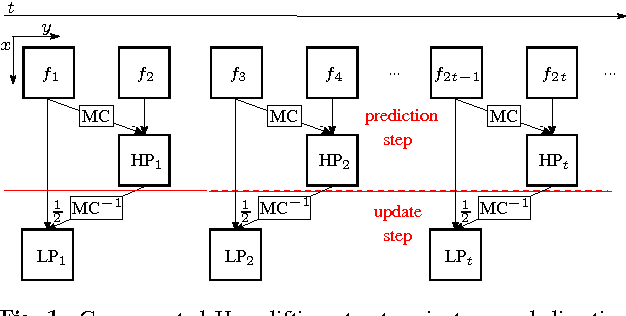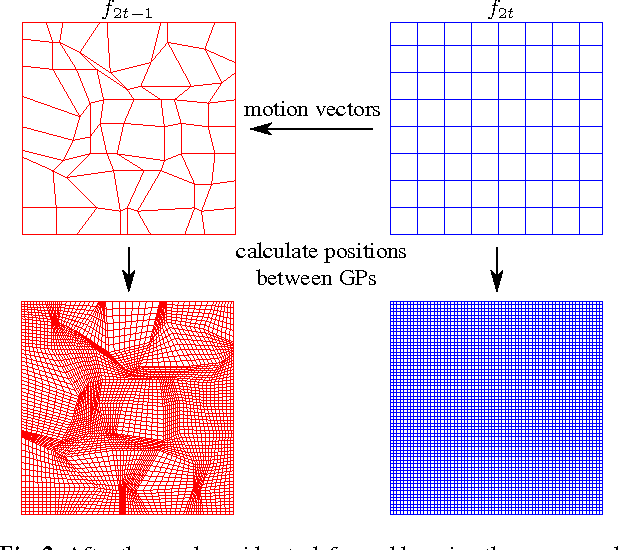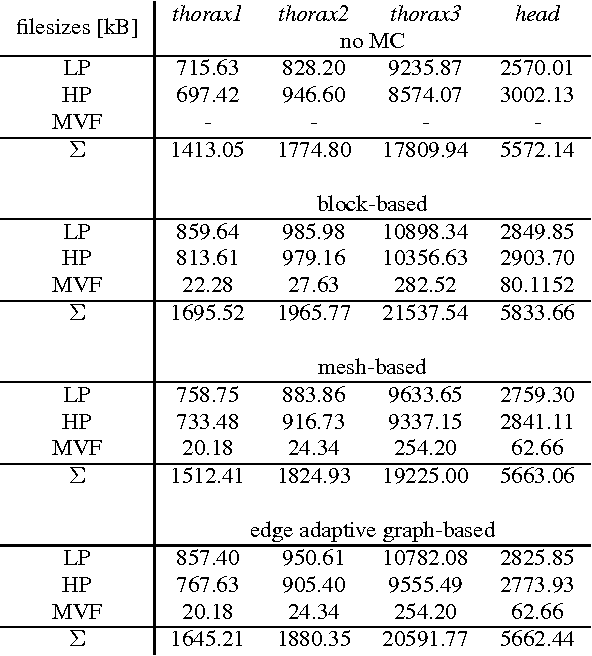Improving mesh-based motion compensation by using edge adaptive graph-based compensated wavelet lifting for medical data sets
Paper and Code
Jan 12, 2023



Medical applications like Computed Tomography (CT) or Magnetic Resonance Tomography (MRT) often require an efficient scalable representation of their huge output volumes in the further processing chain of medical routine. A downscaled version of such a signal can be obtained by using image and video coders based on wavelet transforms. The visual quality of the resulting lowpass band, which shall be used as a representative, can be improved by applying motion compensation methods during the transform. This paper presents a new approach of using the distorted edge lengths of a mesh-based compensated grid instead of the approximated intensity values of the underlying frame to perform a motion compensation. We will show that an edge adaptive graph-based compensation and its usage for compensated wavelet lifting improves the visual quality of the lowpass band by approximately 2.5 dB compared to the traditional mesh-based compensation, while the additional filesize required for coding the motion information doesn't change.
 Add to Chrome
Add to Chrome Add to Firefox
Add to Firefox Add to Edge
Add to Edge